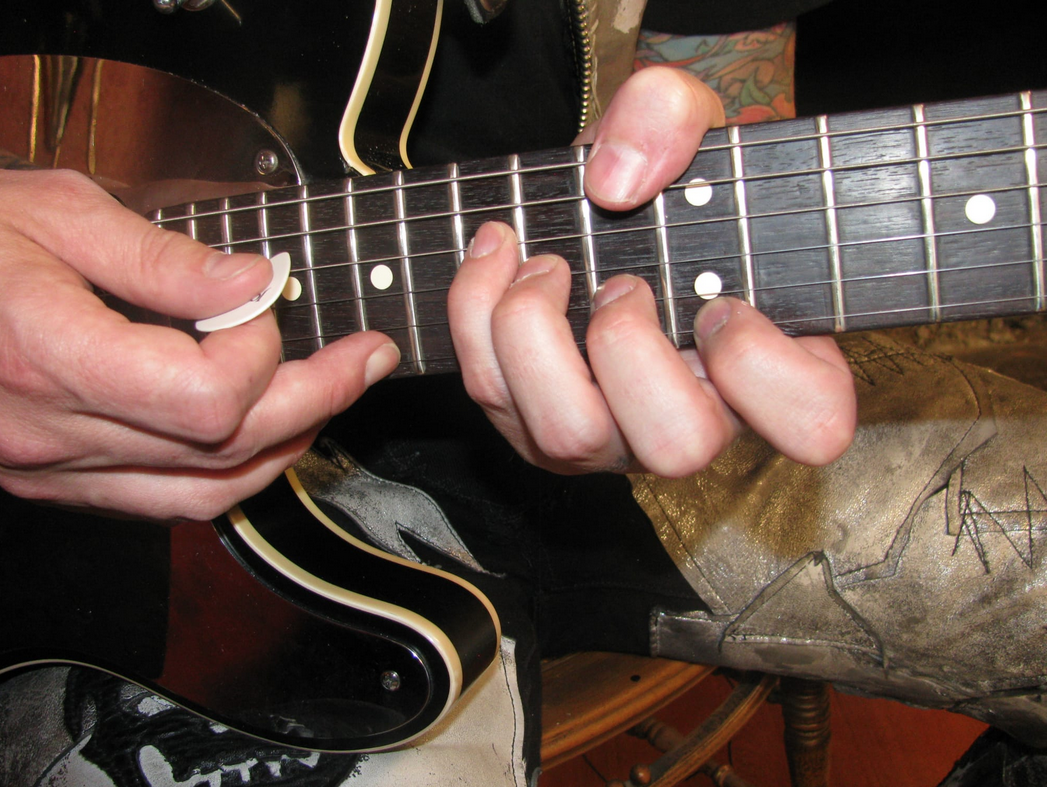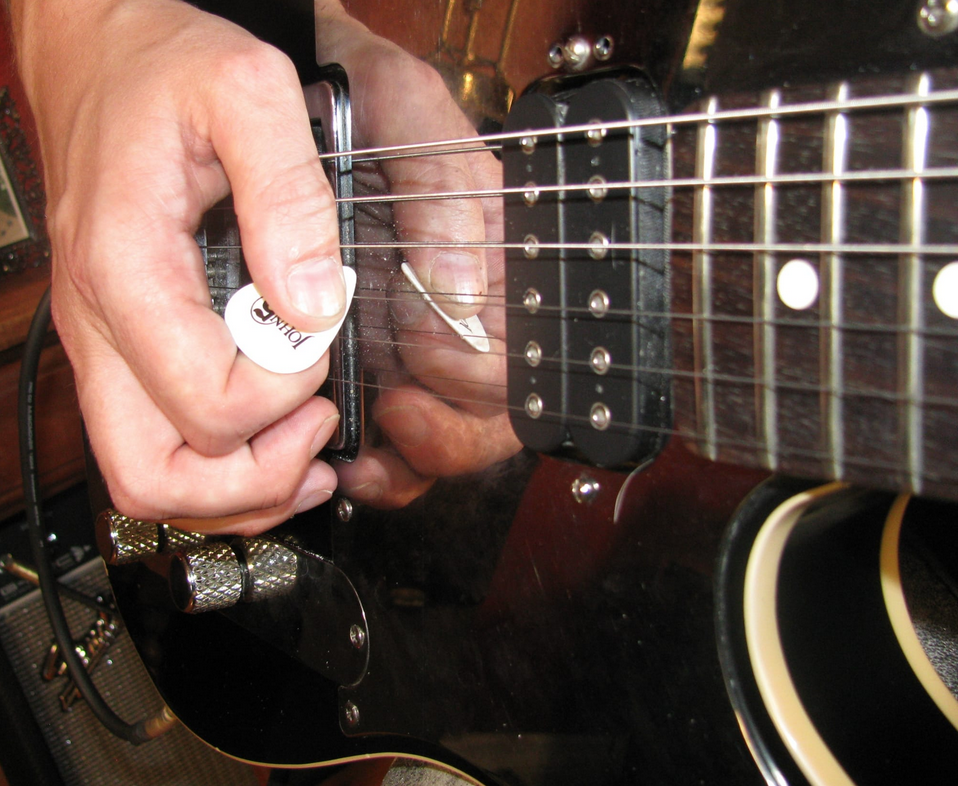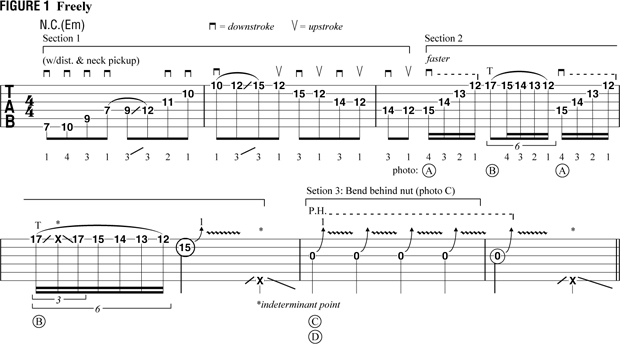This classic Guitar World lesson was first published in 2011.
Today, we are going to be looking at an arpeggio-driven, classical-flavored run in E minor, which incorporates some sweep picking, pinch harmonics, a sliding finger tap and some behind-the-nut string bending.
FIGURE 1 illustrates the lick, which we’ll break up into sections that can be mastered one at a time. Section 1 uses the neck pickup and begins with an ascending B minor arpeggio (B D F#) shape in seventh position.
Next, slide up the neck for a D major arpeggio (D F# A), which, in this context, creates a Bm7 (B D F# A) sound, before sliding up to 12th position and descending using our old friend the E minor pentatonic scale (E G A B D).
As you’ll notice in the video, I pick using only downstrokes for the first 10 notes, together with a couple of hammer-ons and legato finger slides. I then revert to strict alternate picking (down, up, down, up, etc) for the E minor pentatonic descent.
Section 2 is where we start to put the pedal to the metal, in terms of speed, while staying on the neck pickup. This section starts off with an Fmaj7 (F-A-C-E) sweep arpeggio, performed with a single downstroke across the top four strings, using the fret-hand fingering shape shown in PHOTO 1.

The secret behind successful sweep picking is to not let the notes ring into each other like a strummed chord. This is accomplished by relaxing the fretting finger on each note before the next one sounds.
All the latest guitar news, interviews, lessons, reviews, deals and more, direct to your inbox!
Immediately following the sweep, I tap the A note at the high E string’s 17th fret with my pick-hand middle finger (PHOTO 2), and then do a chromatic pull-off using all four fingers of my fret hand.

This whole pattern is then repeated, only this time, following the finger tap, I slide my tapping finger up the neck and then back down to the 17th fret before pulling it off.
As I point out in the video lesson, as this tapped slide happens so quickly, it doesn’t really matter what fret it goes up to - it just sounds cool! After the chromatic pull-off on the high E string that follows, Section 2 ends with a bend on the D note at the B string’s 15th fret, with vibrato.
For the third and final section, I switch to the bridge pickup and do some behind-the-nut string bending (PHOTO 3) while picking pinch harmonics on the open G string.

It helps to have a lot of gain to get pinch harmonics happening, and you also have to graze the string with the edge of your thumb as you pick it (PHOTO 4). In super-slow motion, your pick hits the string first, followed a fraction of a second later by the edge of your thumb. Hence the name “pinch harmonic.”

These harmonics happen in different places, depending on whether you’re picking an open string or a fretted note. To enact the behind-the-nut bends you obviously need a guitar that doesn’t have a locking nut and, as you can see in PHOTO 3, I use more than one finger to push down against the string for added strength and control.
This short run and the techniques it utilizes will hopefully give you a few ideas to use in some licks of your own.

